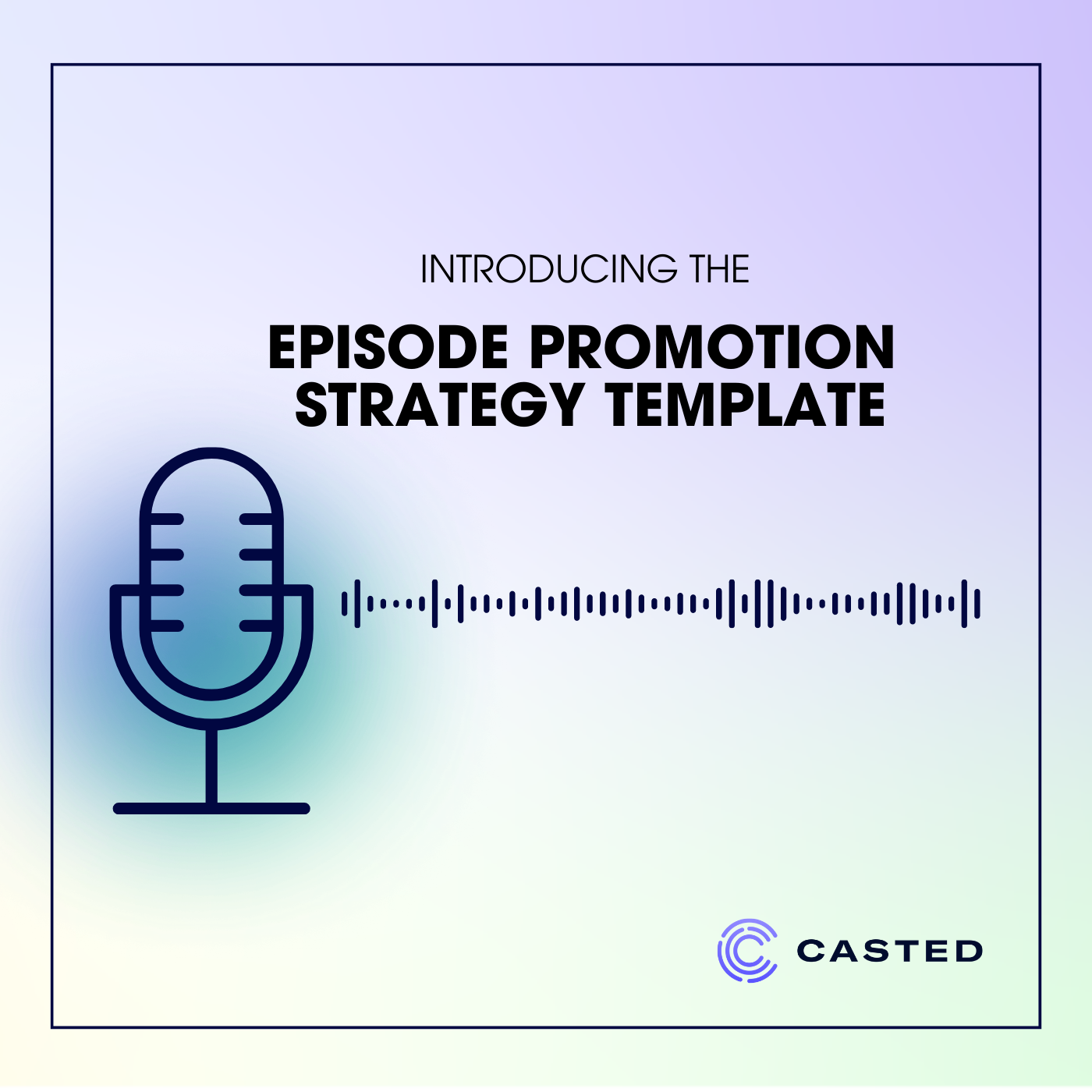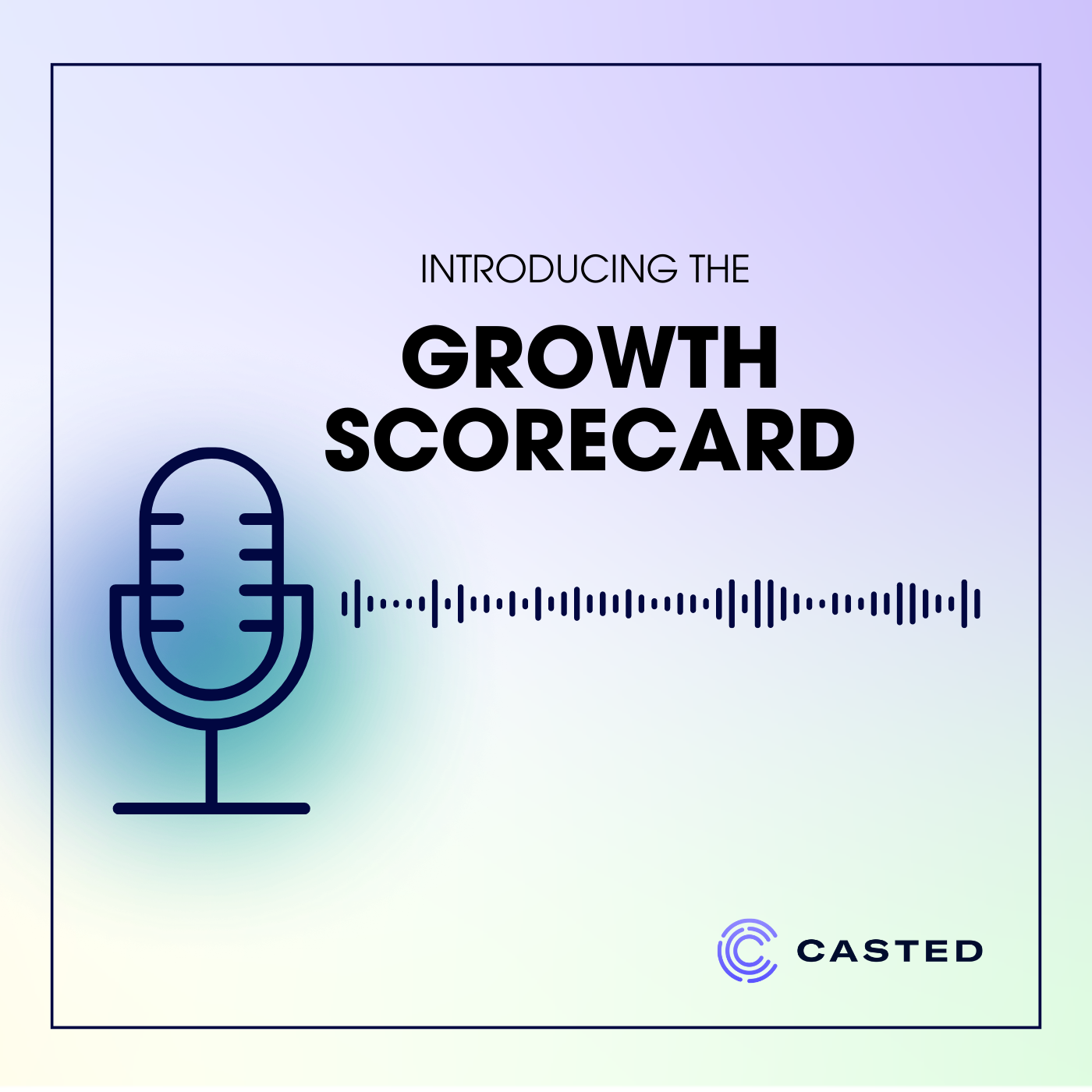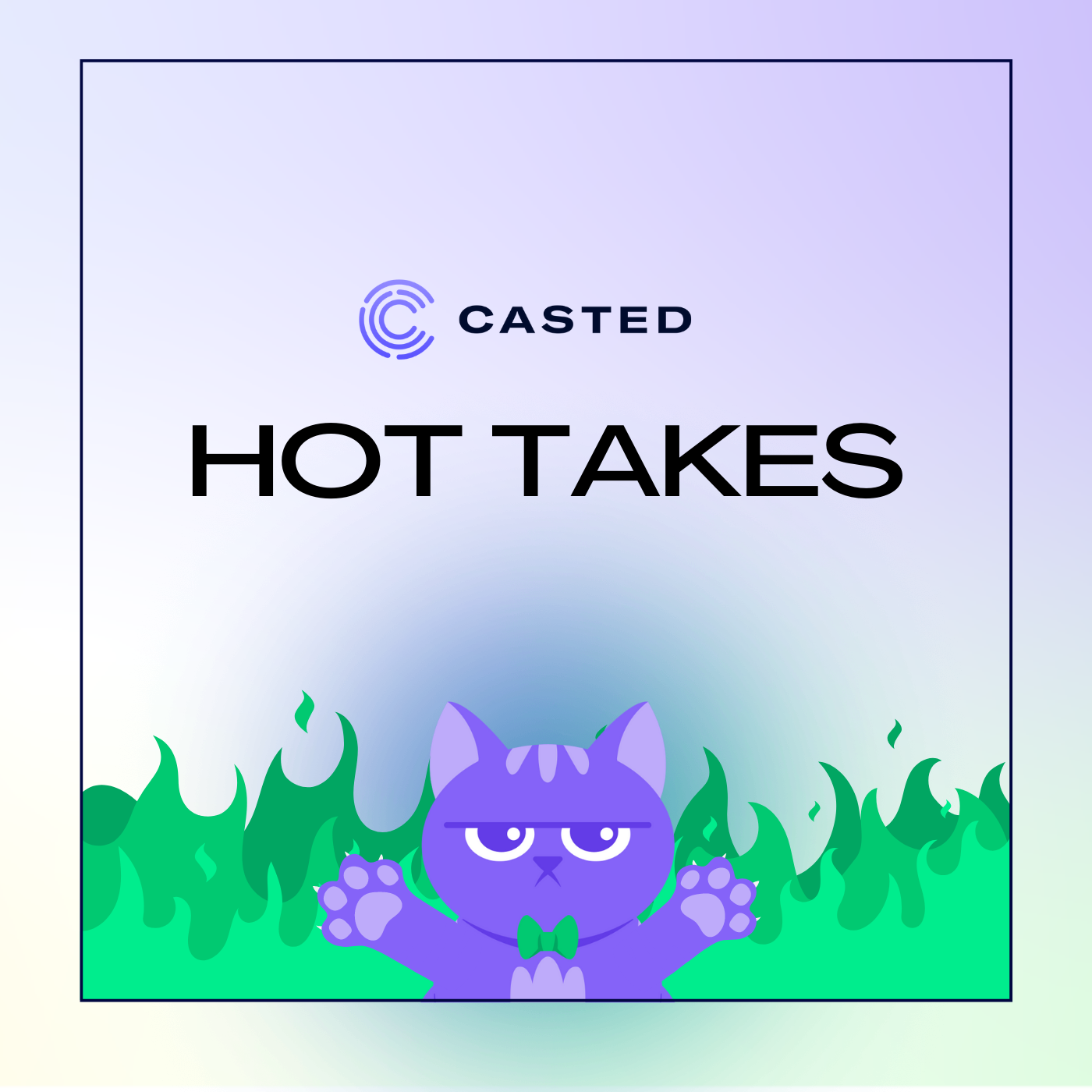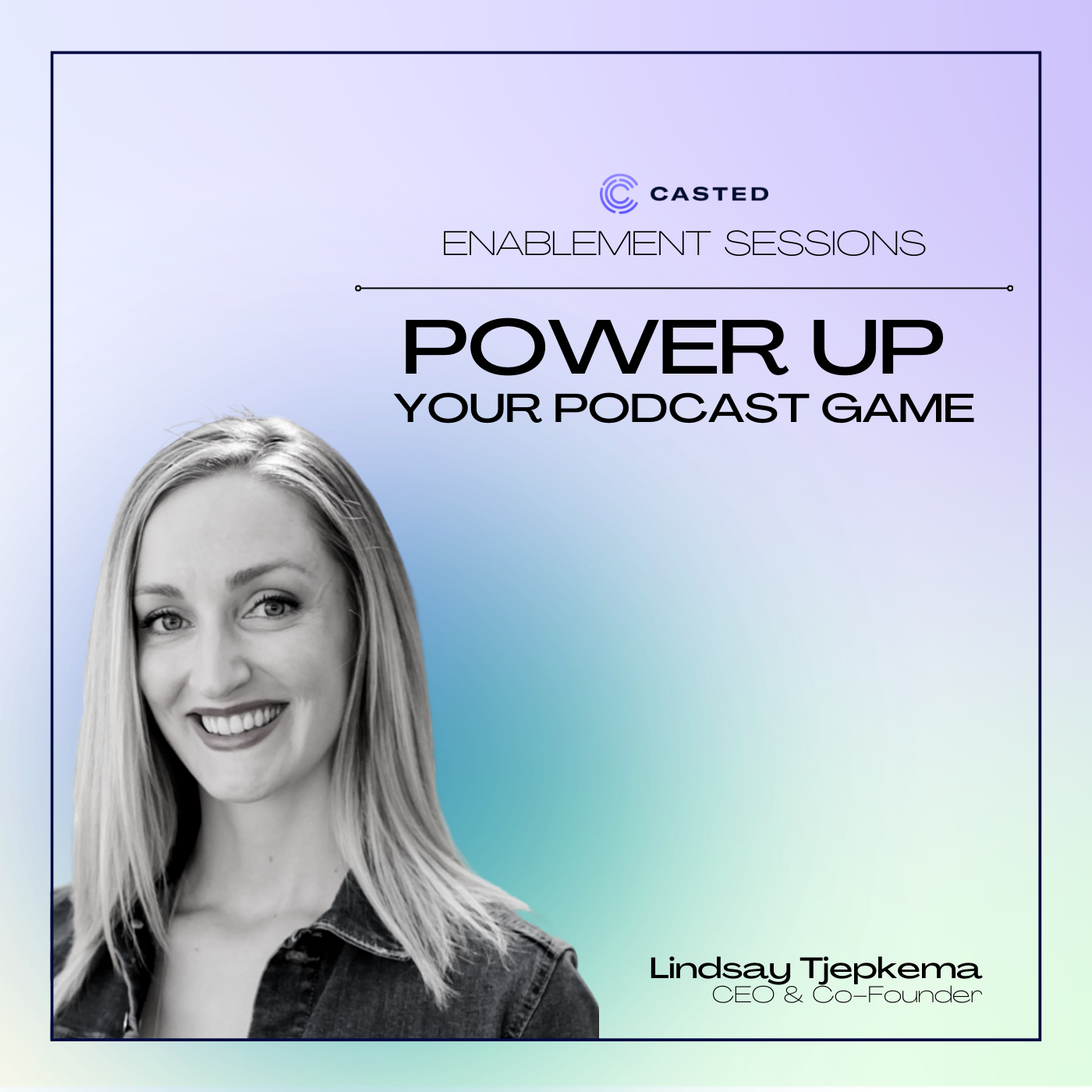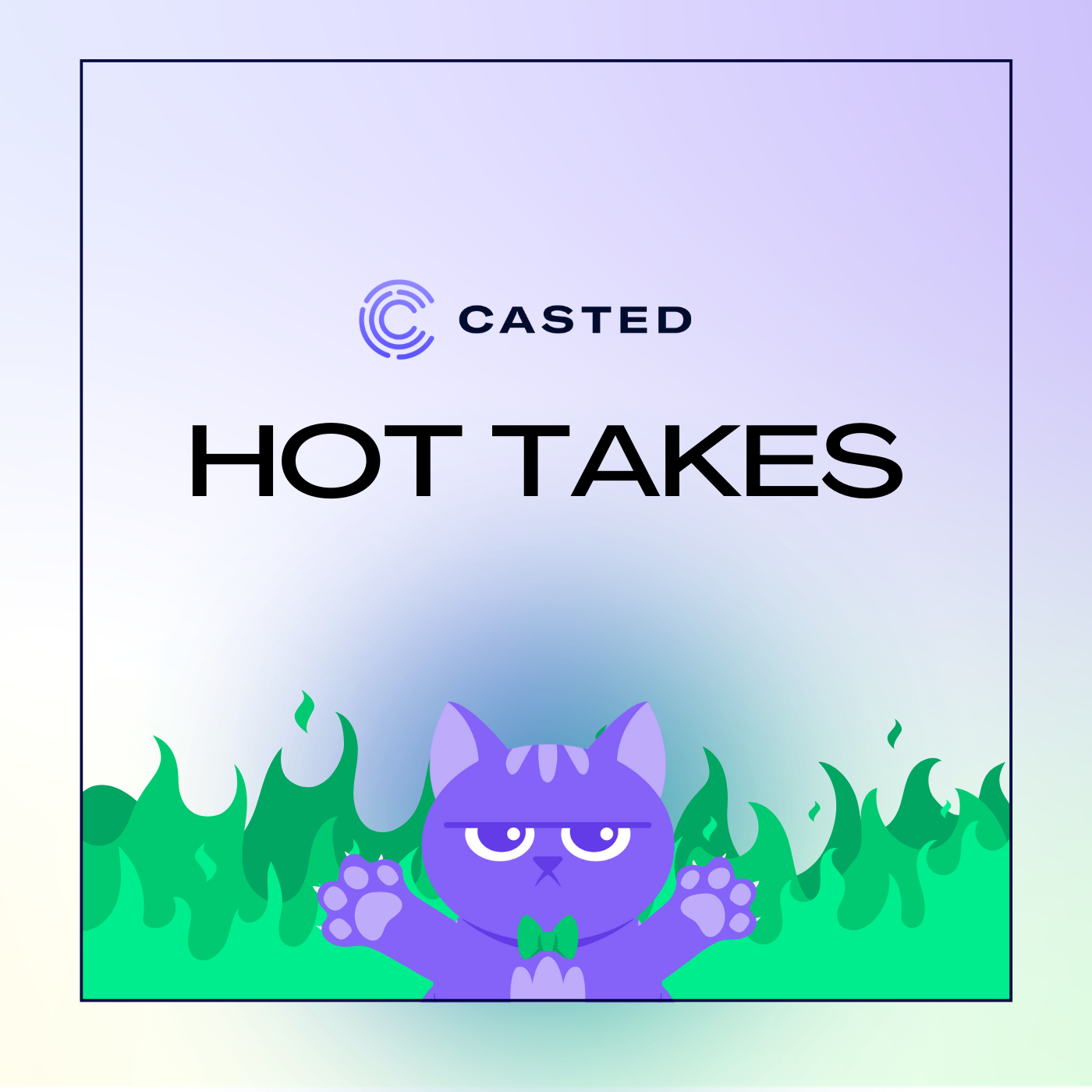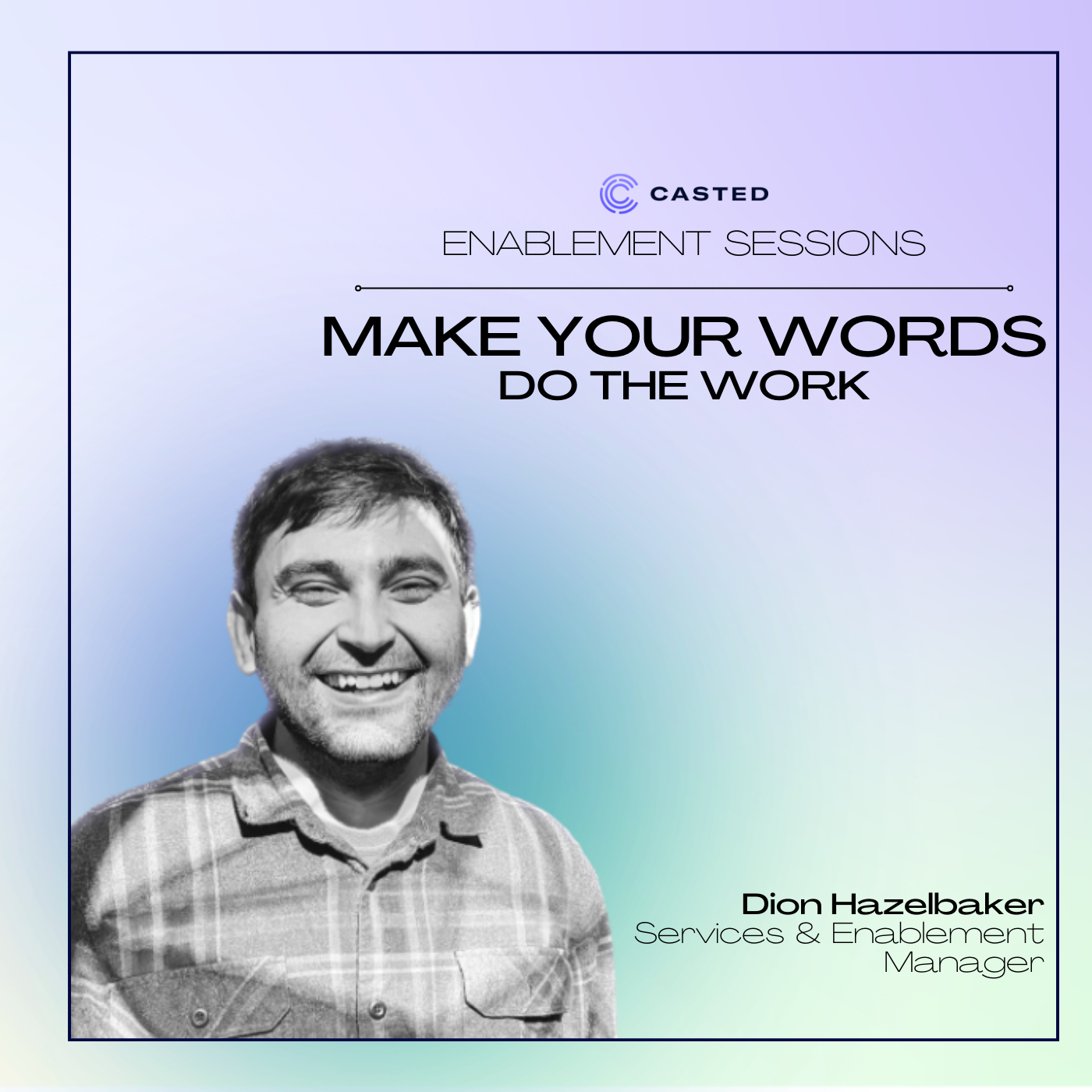Introducing the Episode Promotion Strategy Template
- 0.5
- 1
- 1.25
- 1.5
- 1.75
- 2
Katie: The Show Growth stage is one of the most important on your B2B podcasting journey. This is where you not only grow your audience, but you also get to understand who they are and how they're engaging with your content. The key to growing your show is having a strong episode promotion strategy. This is key to not only ensuring that you're amplifying every episode to reach new audience members, but also retaining those audience members by being consistent and building trust and rapport. To help you with this, we've developed an Episode Promotion Strategy template for you to use yourself. That way, you can feel confident that with every episode, you are consistently amplifying and measuring. I won't keep you waiting. Let's jump in. The first thing we're going to start with is the Show tab. The Show tab consists of two things: the Show Setup Checklist, as well as Overall Show Promotion Efforts. This makes sure that you have everything ready to go from a technical and strategic perspective. This is the Episode Promotion Strategy template. The first thing that you might notice is that there are instructions at the top to make a copy. The idea here is that you make a copy of this template and really make it your own. On that note, if you look at the bottom of the two tabs, we're currently on the tab that says "[Show Title]". The intent with this tab is for you to rename it to reflect your show title again, to make you feel a little more at home. So for example, we would add "The Casted Podcast". We'll talk a little bit more about the "[Episode Title]" tab in a little bit. Now let's take a look at the Show Setup Checklist. These are all of the recommendations that we provide when using Casted to set up your show. This makes sure you have everything you need to ensure that you are on track for success. Your checklist starts off with your Show Set-Up. Those are things like setting up your RSS settings so you can successfully syndicate to all of the podcast apps and establishing your Show Description, Host Information like their photo, name and role, and your Show Art. These are hyperlinked, so you can go to their respective help articles or help videos in case you get stuck or need any recommendations on best practices. Next is establishing a show landing page, which is really important for discoverability and for having a place to direct your audience to engage with additional resources. At Casted, we provide landing pages with every collection that's set up, but you don't necessarily have to use our landing pages. If you would prefer to have your landing page on site, you could use our episode embeds, show embeds, or API as tools to help streamline this process and manage it way easier. Custom Navigation is something that you set up if you are using our landing pages. Setting up two to three custom navigation links helps direct your audience towards what they will engage with beyond your show. Sometimes this is to promote another podcast. Sometimes it might be to promote other content, and sometimes it might be to direct them towards your blog or other solution pages. Next is Custom Domain, which is required if you plan to set up any integrations with HubSpot, Marketo, or Pardot. A custom domain is also really helpful when it comes to SEO and establishing trust with your audience because it shows that your content belongs to your domain and your brand. Next is setting up your integrations, which is making sure that all integrations that are applicable to you and your tech stack have been configured and are ready to go. Your Google Analytics tag is making sure that engagement on Casted pages and players can be reported through your Google Analytics reporting. And last is Podcast Syndication. Making sure that your show is available on all the popular podcasting platforms such as Apple, Spotify, and Google at absolute minimum. Google is a really important syndicate because of the implications that it has on search and discoverability. We also recommend diversifying your reach by syndicating across smaller niche podcast apps that may align with the preferences of your audience. Next are your Overall Promotion Efforts. The first one here is being a guest on other podcasts. This is a great way to not only network, but also to promote your own show. We recommend doing this at least once per quarter. Next is asking for reviews. This is really simple and something that you hear across any podcast that you listen to, whether it's B2B or not, and that's asking for reviews. This is reminding your audience that if they enjoy your content, leave a review to sing your praises. I don't know about you, but when I look at podcast topics that I'm interested in, I always look at the reviews to see if other people are enjoying it. This is something really simple that you can incorporate into your show format. Next, we're going to dive into the meat of the Episode Promotion Strategy template, and that's the Episode tab. This runs through everything you need to build a successful episode, starting with your title and description for the episode through how to execute in Casted, and then how to promote everything from social, blog, newsletter and so on. There's a lot here, so I won't keep you any longer. Let's take a look. Next is the Episode tab. Similar to the "[Show Title]" tab, you want to rename this tab to reflect the title of your episode, the season number, and the episode number. You don't have to follow this format. This is just what we've found as helpful. The idea with this tab is that you'll continue to duplicate it over and over and over again, so you have a completed checklist showing that you did everything that you needed to do for each episode. So you would have one tab for episode 1, one tab for episode 2, so on and so forth. Then if you start a new season, you can start a whole new document or you can just continue with this one. First, you have your Episode Details Checklist. This is something that you want to make sure to do every single time. It starts with identifying the episode keywords or the overall topic of your episode. The key here being picking one or two keywords that align with the search intent of your target audience. These keywords will be threaded throughout your title, episode description and other components, so it's really important to not skip this step. Next is establishing your title, and you'll see on the right- hand side that there are some recommendations and best practices on how to formulate this. Following that is your episode description, which goes out to all the podcasting platforms, your show notes, which is exclusive to Casted players and pages, and your social card description when you share your content from Casted and how it appears when it populates on the various social platforms. Again, on the right- hand side, you'll see different recommendations and best practices of what to include. Something important to point out is that all of these include your episode keyword or keywords. Next is the Casted Checklist, which are all the things you want to make sure to do in Casted prior to publishing your content. The first being adding your transcript to your pages and players, which helps boost SEO and makes your content more accessible. Next is creating your key takeaways, which is creating clips in Casted, enabling them as a key takeaway which builds your highlight reel. You want to align this with the key moments and timestamps in your episode description so you have a consistent experience no matter where your audience is tuning in. Next is creating an audiogram or videogram for each key takeaway. If your podcast has video, you always want to prioritize videograms. Next is filling out your guest info and resources, and last, you want to make sure that you have unique share links for all of the different social platforms as well as your host and guest, so you can track who is generating the most engagement. Feel free to customize the social platforms that are reflected here. Now, we're moving into amplification. Before I start going into the different checklists, it's important to call out here that this may be a little too much for your team right off the bat, and that's okay. What's important here is consistency, so if you can't consistently deliver on all of these pieces, then pull out what you can't deliver on right now, then pick a few areas to prioritize and put the rest on the back burner for right now. As you get into the routine, you'll become more efficient, which will allow you to do more things as you start operating like a well- oiled machine. What I normally recommend for our customers is to gray out any areas that you are not focusing on right now so it's clear what's relevant and what's not. Let's dive into the Social Checklist, and the first is uploading your content to YouTube, which helps optimize for search and is recommended for every episode. The cool thing is that Casted has an integration with YouTube, so you could set up the auto publish option and don't have to worry about uploading your content to YouTube separately. Next is providing your guest with a promotion kit, which includes a unique share link and one to two audiograms or videograms so they can promote on their social network. Last are creating your social posts. Again, feel free to customize the social platforms indicated here. In the notes to the right, you'll see a recommended cadence as well as the type of asset that we recommend for that social post. So for pre- launch, using an audiogram, videogram or some sort of static image is a great way to tease the upcoming episode. On launch day, you want to include an audiogram or videogram to share a really impactful quote or a really entertaining part of the conversation. Day 3 and day 7, you want to promote again, but you can use really anything. You can do an audiogram, a videogram, a static image. Other ideas that we have indicated here are creating an image carousel, a Twitter thread, quote cards, a poll. The possibilities are endless. Have fun with it. Next is the Blog Checklist. We recommend two blogs per episode. First is an episode blog post, which is specifically saying, "Here is this episode of this podcast with this guest, and here's what it's about." The other blog post is more centric to the episode topic, so at the very top, when you chose one to two keywords, this blog post will focus around that specific keyword, so it'll be something a little bit more general and not as evident that it's based off of podcast episode. That presents a really great opportunity to incorporate clip embeds to make it a more interactive blog post. To the right, you'll see recommendations that most bloggers follow, including something actionable, backlinking and common SEO tactics like keywords, image tags, heading tags, etc. Next is the Awareness Checklist, and this is making both your customers and your company aware that a new episode has launched. The customer email is a release to your customer saying, " ey, a new episode is live," or you can compile things in a newsletter in more of a summarization. Promoting on your company homepage is bringing that episode front and center if possible. Promoting on company homepage is bringing that new episode front and center if possible. If you have a tool that manages your company email signatures, you can easily push promotions to all of your employees' signatures to promote that new episode. Next is your Next Level Amplification. Here we have a recommendation for creating one YouTube Short for every key takeaway. YouTube Shorts are huge right now. One thing to keep in mind is that Casted does not currently integrate with YouTube Shorts, so if you're going to do this, this is going to be a separate effort outside of the Casted and YouTube integration. And finally is the measurement piece. You'll want to pull your 7-day episode numbers and your 30-day episode numbers and input them into your scorecard. We actually have scorecard templates that you can use for this very purpose. Thanks for letting me take you on a tour of this new template. We've been so excited to roll this out to you and we hope that you find it as helpful as we have. What's really exciting is this is also a work in progress. We are constantly learning new things about how to level up in podcasting. So we're going to continue to add new lessons that we've learned and we hope you share lessons that you've learned along the way with us. Please don't hesitate to share your feedback with us directly at success@casted.us.
DESCRIPTION
In this session, we delve into the crucial growth stage of your B2B podcasting journey. The growth stage not only involves expanding your audience but also understanding their preferences and engagement with your content.
To accomplish this, a robust episode promotion strategy is key. Join us as we introduce the Episode Promotion Strategy template, designed to empower you to consistently amplify and measure the impact of each episode.
You'll learn:
- How to set up your show to ensure that you have all technical and strategic aspects in place
- How to structure a successful episode, from crafting attention-grabbing titles and compelling descriptions to executing the process seamlessly in Casted
- How to use our comprehensive checklists for social media, blogging, and increasing awareness
Our Episode Promotion Strategy template will empower you to consistently amplify, engage, and measure the impact of your podcast episodes. Get ready to take your podcast to new heights!

